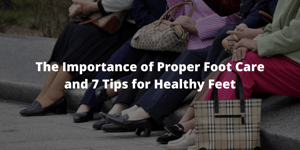The summer heat can be relentless, leaving us feeling drained, lethargic, and longing for relief....


The summer heat can be relentless, leaving us feeling drained, lethargic, and longing for relief....

Healthy feet are vital to people of all ages. Proper foot care plays an important role in ...

Whether you are responsible for taking one medication, or many, it is critical to take them as...

Are you experiencing difficulty with your hearing? Don't worry, you're not alone. Many individuals...

As our loved ones age, it's not uncommon for them to start showing signs of memory decline. While...

Digestive problems are a common occurrence in our lives, often showing up as bothersome issues like...

Planning for long-term care expenses seems to involve a lot of wishful thinking for many. As...

Among the many ways of paying for long-term care, life insurance and annuities have been...
![Your Long-Term Care Insurance Roadmap [Video]](https://7364579.fs1.hubspotusercontent-na1.net/hub/7364579/hubfs/Plain%201024x512/Copy%20of%20Your%20Long-Term%20Care%20Insurance%20Roadmap.jpg?width=300&name=Copy%20of%20Your%20Long-Term%20Care%20Insurance%20Roadmap.jpg)
When it comes to preparing for retirement, most consumers have only a vague idea about...
![How Your Home Can Help Pay for Long-Term Care [Video]](https://7364579.fs1.hubspotusercontent-na1.net/hub/7364579/hubfs/Plain%201024x512/Copy%20of%20How%20Your%20Home%20Can%20Help%20Pay%20for%20Long-Term%20Care.jpg?width=300&name=Copy%20of%20How%20Your%20Home%20Can%20Help%20Pay%20for%20Long-Term%20Care.jpg)